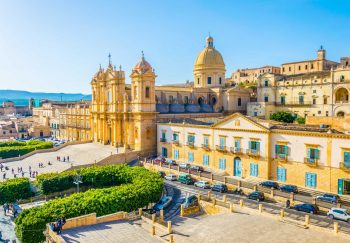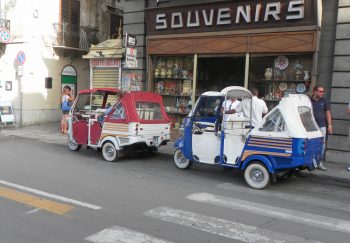The fascinating history of Sicilian wine is rich and varied. It has been the result of collaborations between diverse types of people who share a passion for it.
An archeological evidence from the past demonstrates that Sicily was the first region in Italy to practice enology.
We used wine to enhance the body of more expensive wines. Our vineyards exported Sicilian wines to France and Northern Italy until the 1950s to increase their alcoholic content and to balance the colour of the most well-known wines.
Recent years have seen a rise in enthusiasm from those who are committed to improving the quality and innovation of our vineyards. They have created new vines, tried new techniques and modernized plants. The sun, the earth, the hills, and the sea breeze did the rest. This has resulted in extraordinary Sicilian wines that have been a major player on the international stage.
Many wineries have spread their refined hospitality throughout the island. Numerous wineries offer tastings to the public, giving the chance to experience the production of Sicilian wines DOC or DOCG.
The provinces of Trapani, Agrigento, and Palermo have a concentrated wine-growing sector that accounts for over 80%. Over 50% of total regional wine production is concentrated in Trapani. Cerasuolo Di Vittoria is the only Sicilian DOCG wine (Registered & Guaranteed Designation of Origin). It’s made in the Ragusa area with Nero d’Avola, Frappato and other vine varieties. Nero d’Avola is a Sicilian symbol. It can be found in the southeast corner of the Island, between Ragusa e Syracuse . This symbol has been a symbol of Sicilian oenology and fighting the rise of international wine varieties.
Three DOC wines are produced in the provinces of Palermo and Trapani: Alcamo and Marsala. Marsala, the liqueur and most well-known DOC wine in Italian wine, is made throughout Trapani. The Favinia Le Sciabiche is an old wine that is characteristic of Favignana. It has been back on the tables for more than 100 years. Last but not least, the Sicilia DOC designation has been in effect since 2011.
Many wineries make interesting wines in the Menfi and Agrigento areas. They can be found in the area between the D.O.C. Santa Margherita di Belice, Sambuca di Sicilia and Menfi. These wineries use international varieties of vines, such as Syrah, Cabernet Sauvignon and Merlot, in addition to their native varieties.
We find DOC Riesi in the Caltanissetta region, which is home to white, red and rose wines. It also produces sparkling wines.
The vines produce wines that are highly sought-after. They have the unique climatic conditions of the volcano and the wind from the Ionian Sea, which give them character and vitality. The island’s most famous trail runs from Fiumefreddo into Randazzo. It passes through Piedimonte Etneo where you will find the Museo della Vite.
Etna D.O.P Hills wines are premium wines that reflect the uniqueness and origin of a region whose soil was formed by lava boiling in its bowels. This dream wineries tour will feature the red, rose, and sparkling wines made by Nerello Mascalese, and Cappuccio, as well as the white wines made with Carricante, Inzolia, Grecanico .
It’s also worth mentioning Messina, which has three DOC wineries: Faro, Mamertino, and the Malvasia delle Lipari. This golden-yellow wine has a pleasant aroma and was named after Lipari, which is the largest island in the Aeolian archipelago.
The Val di Noto wine is also worth your attention. You can find Moscato di Noto here, as well as throughout the province Siracusa. This white mucat is a well-known red.
Malvasia delle Lipari – Ph. Ignazio Mannarano
Sicily is a wonderful place to fall in love with the most discerning palates.
There are many great discoveries for enthusiasts! You can also go on a search for fine wines, along with traditional Sicilian flavours, by choosing routes along the Wine Roadscrossing Sicily. These routes run from the coast to the hills and around the volcano. Here in detail:
Learn more about wine tourism in Sicily and wine tourism with Movimento Turismo Del Vino.





